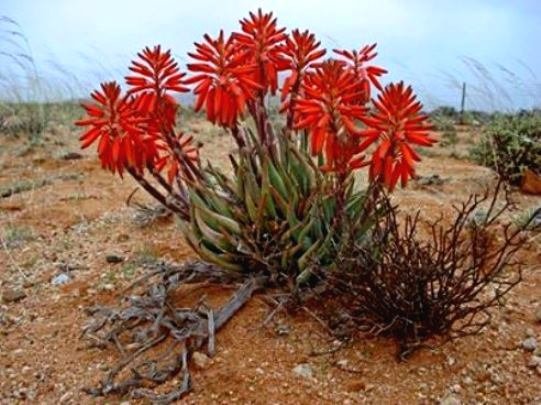Aloe krapohliana

Author: Ivan Lätti
Photographer: Judd Kirkel Welwitch
Aloe krapohliana is a dwarf leaf succulent often growing a solitary rosette of leaves and inflorescences up to 40 cm tall. The form that branches into a clump of several (up to 15) rosettes as the plant in picture is no longer recognised as a variety. Usually a stemless plant, only the oldest specimens may have short, visible stems.
The species distribution is in the west of the Northern Cape, in Namaqualand and western Bushmanland from Vanrhynsdorp to the Gariep River, from Grootderm to Pella, as well as in the far northwest of the Western Cape. The photo was taken near Steinkopf.
The plants grow in arid, semi-desert and Nama Karoo conditions in clay, stony and sandy soils on flats and slopes. Solitary plants or scattered groups of them are seen in the veld, not dense stands. The species is not considered threatened in habitat early in the twenty first century, although threats including overgrazing, overcollection of plants and mining are noted. Transplantation is seldom successful for long (Le Roux, et al, 2005; Van Wyk and Smith, 2003; Reynolds, 1974; iNaturalist; http://redlist.sanbi.org).

